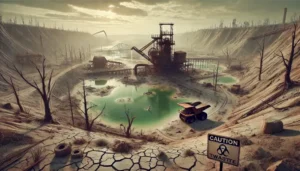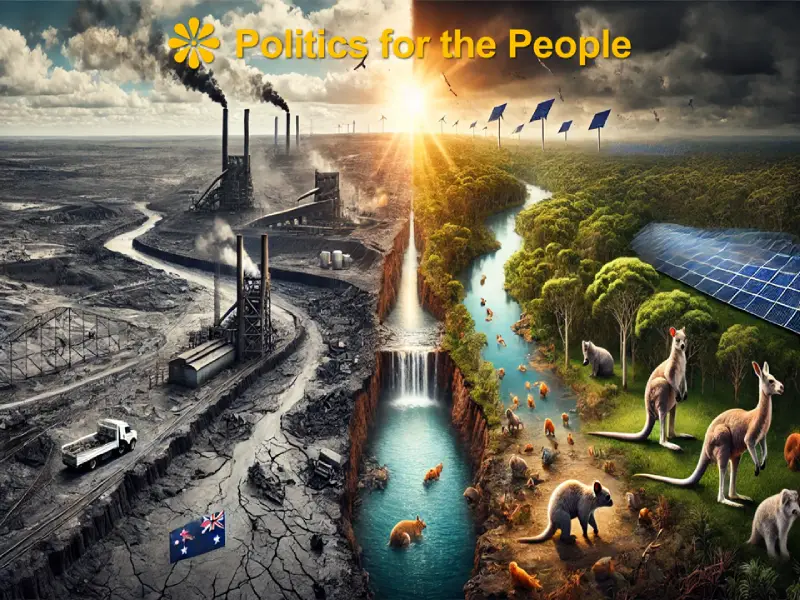Description
Learn how Australia can tackle Earth Systems collapse by addressing fossil fuels, livestock farming, and using CSIRO’s expertise in sustainable solutions.
Introduction
Australia is home to unique ecosystems and biodiversity that are rapidly being degraded by human activities. Fossil fuel dependency, unsustainable agricultural practices, and habitat destruction have pushed the nation to ecological collapse. This article explores the topic of earth systems collapse and presents solutions, including the role of the CSIRO and rewilding marginal lands to secure Australia’s environmental and economic future.
Understanding Earth Systems and Their Fragility
What Are Earth Systems?
Earth Systems are interdependent processes that sustain life. In Australia, these systems include:
– Atmosphere: Affected by emissions from coal and gas industries.
– Biosphere: Home to endemic species like the koala and platypus, which are increasingly threatened.
– Hydrosphere: Rivers such as the Murray-Darling Basin are essential for agriculture and biodiversity but face severe stress.
The Dual Threats of Fossil Fuels and Livestock Farming in Australia
Fossil Fuels in Australia

Australia is still one of the largest exporters of coal and liquefied natural gas, with devastating environmental consequences.
The Legacy of Abandoned Mines
Mining has played a critical role in Australia’s economic development but has left behind a toxic environmental legacy. Many mining companies abandon sites after extracting valuable resources without proper rehabilitation, causing long-term damage to ecosystems and communities.
Environmental Impact
– Toxic Waste Leachate: Abandoned mines often contain hazardous materials, including heavy metals like arsenic, lead, and mercury, that leach into the surrounding soil and waterways. This contamination poses severe risks to local wildlife and human populations.
– Acid Mine Drainage (AMD): One of the most severe consequences of AMD is when sulphide minerals in exposed rock react with air and water to form sulfuric acid. This acidic runoff dissolves heavy metals, polluting rivers, streams, and groundwater.
– Loss of Biodiversity: Vegetation near abandoned mines struggles to recover due to soil toxicity and erosion, leading to habitat loss for native species.
Social and Economic Impact
– Health Hazards: Communities near abandoned mines face increased risks of health issues, such as respiratory illnesses from dust and diseases linked to contaminated water.
– Visual Scars: Abandoned sites leave unsightly scars on the landscape. They are often located near regional communities reliant on tourism, harming their economic potential.
Case Examples in Australia
– Mount Morgan Mine (Queensland): This abandoned gold mine has been leaking acidic water into the Dee River for decades. Efforts to address the damage have been slow and costly.
– Ranger Uranium Mine (Northern Territory): Although closed, the site remains a significant environmental challenge, with radioactive waste needing careful management to protect surrounding areas.
– Public Cleanup Costs: The burden of rehabilitation falls on taxpayers, as in Queensland, where the liability is $1 billion. This issue arises due to inadequate enforcement of mining regulations and insufficient bonds or guarantees against mining companies.
The scale of the Problem
Unrehabilitated Mines: Australia has over 50,000 abandoned mines, many of which require significant intervention to prevent further environmental degradation.
– Ballooning Costs: In Queensland alone, the estimated rehabilitation costs for abandoned mines exceed $1 billion (source). This amount is expected to rise as more mining sites are abandoned.
Why Taxpayers Are Paying the Bill
– Corporate Loopholes: Some companies declare bankruptcy or dissolve their operations, leaving behind unrehabilitated sites.
– Insufficient Bonds: Rehabilitation bonds required by state governments are often too low to cover the full costs of restoring mine sites.
– Regulatory Oversight: Enforcement of rehabilitation obligations has historically been weak, allowing companies to neglect their responsibilities.
Broader Implications
– Environmental Justice: Rural and Indigenous communities, often located near mining operations, disproportionately bear the environmental and social costs of abandoned mines.
– Economic Mismanagement: Instead, public funds used for mine rehabilitation could be invested in renewable energy projects, infrastructure, or healthcare.
Potential Solutions
– Stronger Regulations: Governments must ensure mining companies post bonds that accurately reflect rehabilitation costs.
– Polluter Pays Principle: Enforcing laws that hold companies financially responsible for their environmental impact, even after closure.
– Community Involvement: Empowering local communities to monitor mining operations and advocate for stricter rehabilitation standards.
Fossil Fuel Subsidies and Exports
– Over $10 billion in subsidies were provided to fossil fuel companies in 2022-23.
– Australia’s coal and gas exports drive global carbon emissions, worsening climate change and threatening ecosystems like the Great Barrier Reef.
By understanding the depth of abandoned mines’ environmental and financial challenges, Australians can push for more stringent policies to prevent further damage and hold mining companies accountable for their legacies.
Livestock Farming in Australia
Livestock farming is a leading cause of environmental degradation in Australia.
Deforestation and Habitat Loss
– Land clearing for cattle grazing is responsible for significant deforestation, especially in Queensland.
– Habitat destruction displaces wildlife, including endangered species like the cassowary.
Water and Land Use
– Water: Producing one kilogram of beef requires up to 15,000 litres of water, a critical issue in drought-prone Australia.
– Land: Livestock farming occupies more than half of the country’s landmass, crowding out native ecosystems.
Greenhouse Gas Emissions
Livestock farming contributes significantly to emissions:
– Methane: Cattle emit methane, a potent greenhouse gas.
– Nitrous Oxide: Fertilisers for feed crops release nitrous oxide.
Pollution of Waterways
Runoff from livestock operations pollutes rivers and coastal ecosystems, contributing to:
– Algal blooms in freshwater systems.
– Sedimentation on the Great Barrier Reef, which reduces coral health.
Solutions for Livestock Farming
– Transition to plant-based and lab-grown protein alternatives.
– Support regenerative agricultural practices to improve soil and water health.
– Enforce stricter deforestation laws to protect native habitats.
Solutions to Avert Ecological Catastrophe in Australia
Phasing Out Fossil Fuels
Transitioning from fossil fuels is essential:
– Expand renewable energy infrastructure, including solar and wind.
– Invest in job training for workers transitioning from coal and gas industries.
– End subsidies to fossil fuel companies and redirect funds to clean energy projects.
Transitioning from Animal Agriculture to Alternatives
Encourage a shift from livestock farming to sustainable protein production:
– Promote crops like lentils and chickpeas that require less water and land.
– Invest in precision fermentation and lab-grown meat technologies.
A Vision for Sustainable Food Systems in Australia
The Role of CSIRO in Agricultural Innovation
Australia’s Commonwealth Scientific and Industrial Research Organisation (CSIRO) is a global agricultural and environmental research leader. In the past, it played a key role in pioneering wheat and barley varieties suited to Australia’s arid conditions. Moving forward, CSIRO can lead in:
– developing drought-resistant crops to address climate variability.
– Advancing technologies for lab-grown proteins and precision fermentation.
– Supporting sustainable farming practices that reduce environmental impacts.
Reinvesting in the CSIRO’s expertise is critical for restoring Australia’s position as a leader in agricultural innovation.
Rewilding Marginal Lands
Rewilding marginal lands refers to restoring degraded or unproductive areas to their natural ecosystems. This approach has multiple benefits:
– Carbon Sequestration: Restored forests and wetlands absorb carbon dioxide, mitigating climate change.
– Biodiversity Recovery: Rewilding allows native plants and animals to flourish, rebuilding ecosystems.
– Soil Health: Restored lands improve soil structure and reduce erosion.
Examples in Australia
– Koala Habitats: Reforestation projects in New South Wales aim to create wildlife corridors for koalas.
– Wetlands: Restoring wetlands in the Murray-Darling Basin improves water quality and supports bird populations.
Rewilding marginal lands aligns with Australia’s ecological and economic needs. It allows farming to concentrate on productive areas while letting nature heal degraded regions.
The Role of Collective Action and Policy in Australia
Addressing Greenwashing and Corporate Influence
 Australian industries must be held accountable for misleading claims:
Australian industries must be held accountable for misleading claims:
– Strengthen regulatory frameworks to ensure environmental claims are verified.
– Implement penalties for non-compliance in rehabilitation commitments.
Greenwashing Court Case: https://www.edo.org.au/2023/12/19/federal-court-challenge-launched-against-woodside-over-alleged-greenwashing/
Building National and Global Coalitions
Australia must take a leadership role in climate and environmental initiatives:
– Enhance commitments under the Paris Agreement to achieve net-zero targets.
– Partner with Pacific Island nations to combat regional climate impacts.
Conclusion: Australia’s Responsibility and Opportunity
Australia has the chance to lead the world in addressing our Earth systems collapse. By phasing out fossil fuels, transitioning livestock farming to sustainable alternatives, and using CSIRO’s expertise, the nation can protect its ecosystems while bolstering its economy. Rewilding marginal lands offers a path to biodiversity recovery and climate resilience. The time to act is now—Australia’s future depends on it.
Question for Readers
What role should Australia’s research institutions and policymakers play in addressing earth systems collapse and other environmental challenges?
Call to Action
If you found this article insightful, explore political reform and Australia’s monetary sovereignty on Social Justice Australia: https://socialjusticeaustralia.com.au/.
Share this article with your community to help drive the conversation toward a more just and equal society.
Click on our “Reader Feedback” menu. Let us know how our content has inspired you. Submit your testimonial and help shape the conversation today!
Additionally, leave a comment about this article below.


Is it the continuing influence of conservative media? We need to grow the alternatives ASAP!
Hi Richard,
The mainstream media has a major influence, and many of our politicians of both major parties who are righ wing. We need to elect more independents and minor parties to parliament to break the power of the two-party system.
Hi Richard,
It is my view that everyone should ignore just about everything they see in the mainstream media.
And as the environmental disasters escalate through govt inaction activist who protests this by spraying LIAR in paint on glass then hands himself into police is the bad guy….go figure.
Yes, Ian, there is something wrong with our justice system. It seems to be mainly concerned with protecting corporate interests.